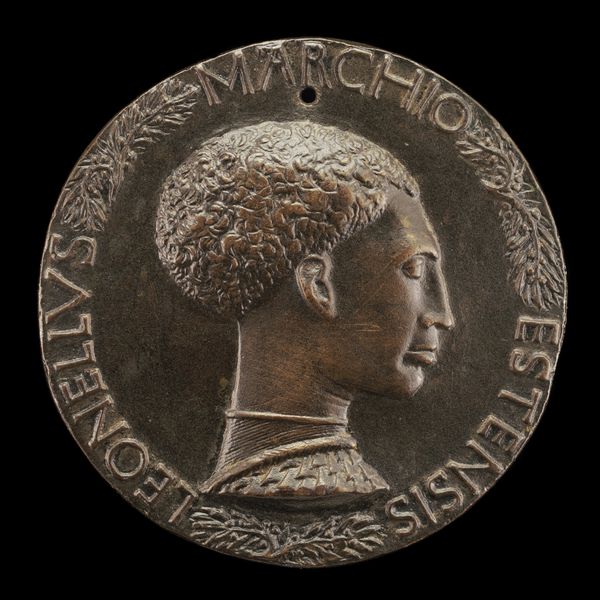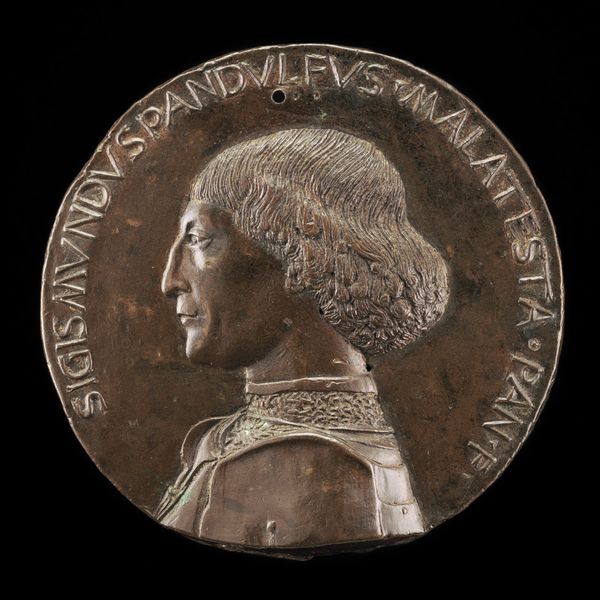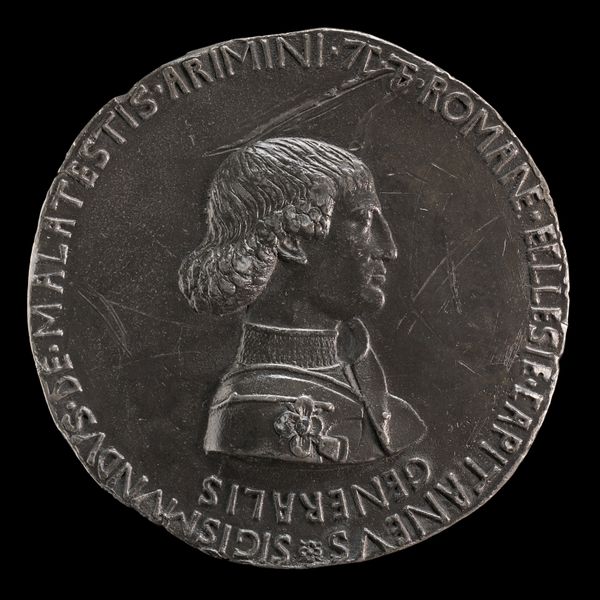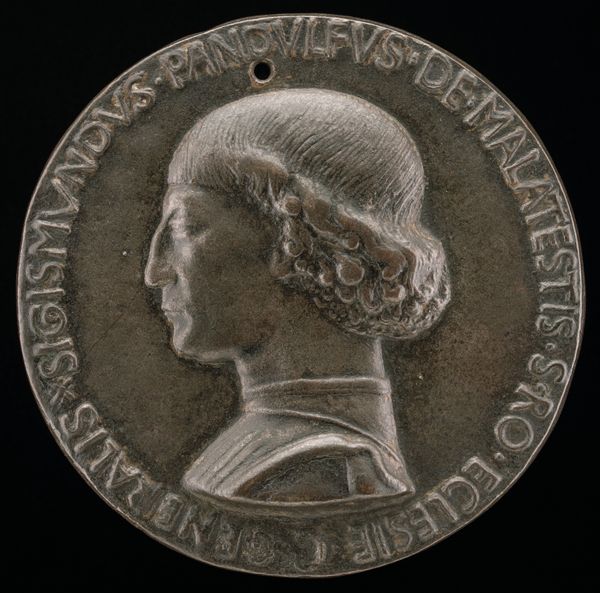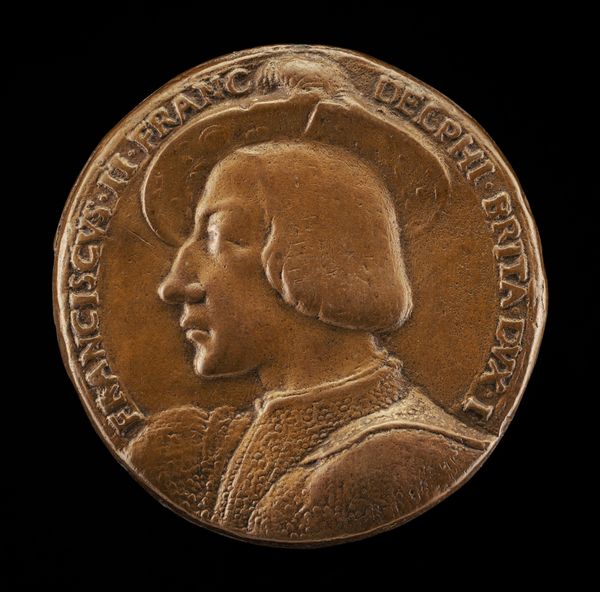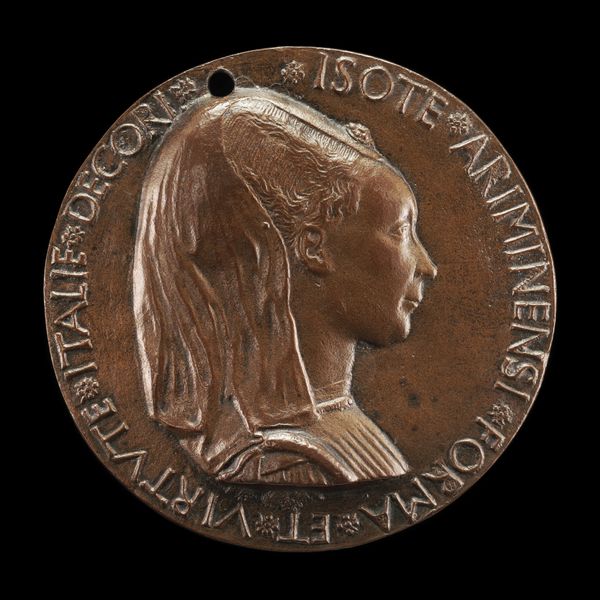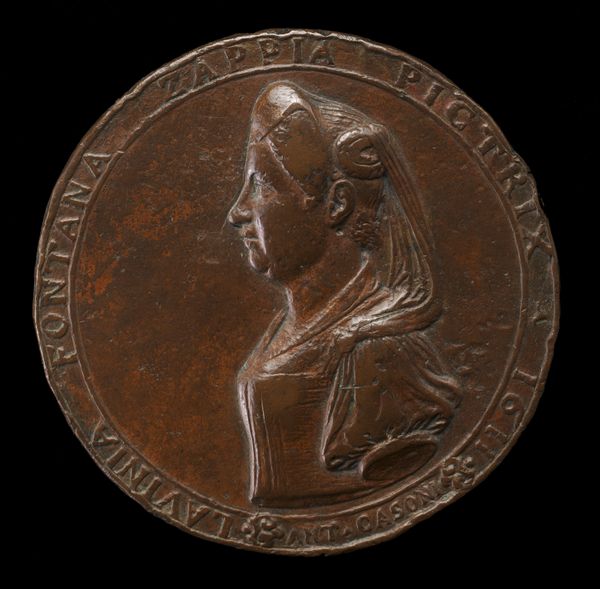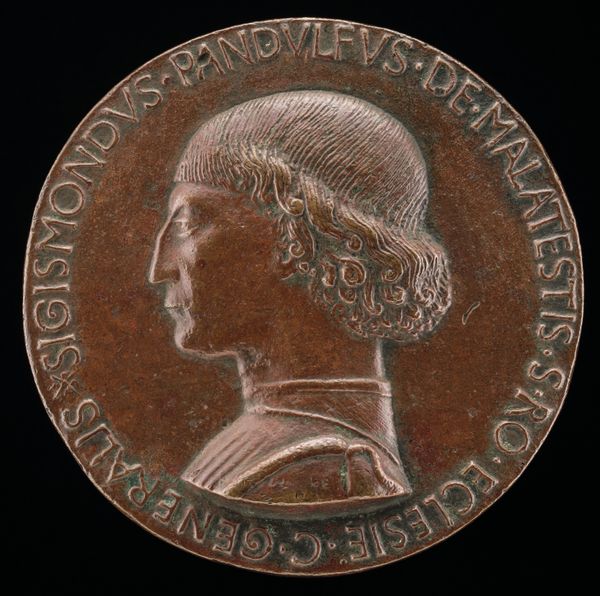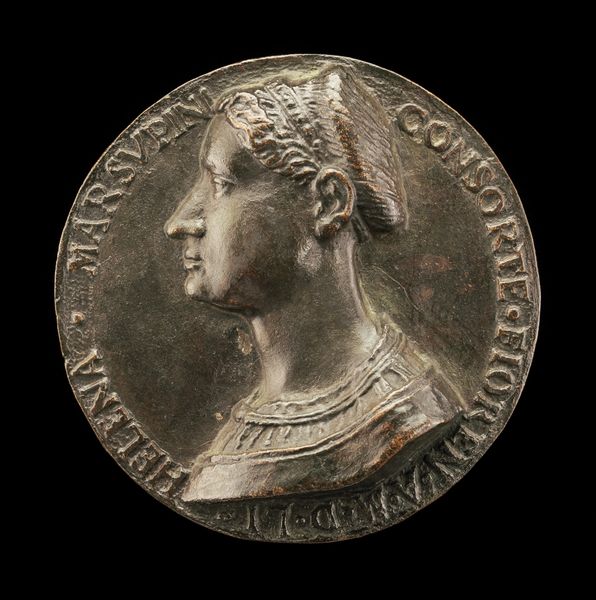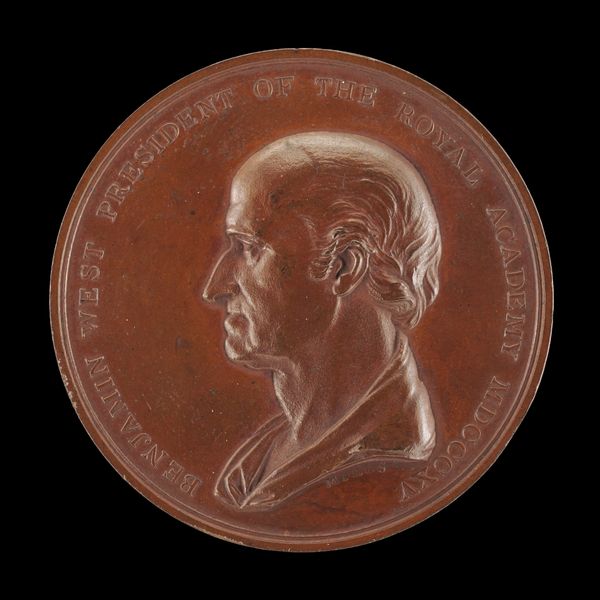![Sigismondo Pandolfo Malatesta, 1417-1468, Lord of Rimini and Fano [obverse] by Pisanello](/_next/image?url=https%3A%2F%2Fd2w8kbdekdi1gv.cloudfront.net%2FeyJidWNrZXQiOiAiYXJ0ZXJhLWltYWdlcy1idWNrZXQiLCAia2V5IjogImFydHdvcmtzL2Y5YjM3NzRhLTAxOTQtNGVmZi05ODc4LWY3OWE5YWViZjQ0Ny9mOWIzNzc0YS0wMTk0LTRlZmYtOTg3OC1mNzlhOWFlYmY0NDdfZnVsbC5qcGciLCAiZWRpdHMiOiB7InJlc2l6ZSI6IHsid2lkdGgiOiAxOTIwLCAiaGVpZ2h0IjogMTkyMCwgImZpdCI6ICJpbnNpZGUifX19&w=3840&q=75)
Sigismondo Pandolfo Malatesta, 1417-1468, Lord of Rimini and Fano [obverse] c. 1445
0:00
0:00
relief, bronze, sculpture
#
portrait
#
medal
#
sculpture
#
relief
#
bronze
#
sculpture
#
history-painting
#
italian-renaissance
Dimensions: overall (diameter): 8.95 cm (3 1/2 in.) gross weight: 288.69 gr (0.636 lb.) axis: 12:00
Copyright: National Gallery of Art: CC0 1.0
Curator: Isn't it exquisite? The play of light on the bronze gives it such a warm, almost human, glow. Editor: It's quite striking. Stark even. I find the sharp profile against that flat background particularly compelling in the context of early Renaissance power dynamics. Curator: Ah yes! This is Pisanello's bronze medal depicting Sigismondo Pandolfo Malatesta, Lord of Rimini and Fano. Made around 1445, it's a testament to the rising fashion for celebrating individuals. I feel a touch of envy looking at it, imagining how wonderful it would be to be cast in bronze! Editor: Absolutely. Consider this as a carefully constructed object, intended to broadcast power. Malatesta was a controversial figure; a condottiero, a warrior, often at odds with the papacy. Portrait medals such as this allowed a means of disseminating very particular representation. Curator: I do agree—but I also believe there is a strong dose of truth to his likeness. It feels like Pisanello captured his… spirit, somehow. Almost playful. Editor: Perhaps. Though this type of portraiture was a formula; the profile, the Latin inscription carefully circling him like an aura. These things served to emphasize lineage, power, and intellect at a time when humanist ideals were becoming fashionable amongst elites. Curator: And yet, don't you feel it transcends that a bit? There's a softness to his features that betrays his fierce reputation. Pisanello saw something deeper, I think, even while fulfilling a commission. He hints at vulnerabilities. The subtle, almost timid curls of his hair around his neck...it brings him to earth. Editor: That softness could also be Pisanello gently trying to legitimize a leader who relied primarily on force. Regardless, this image became powerful shorthand, one that evokes a complicated and rather ruthless figure of the Italian Renaissance. Curator: It’s funny how objects can become little time machines, or emotional touchstones if you will, isn't it? Holding this bronze medal you might almost touch Malatesta’s existence—or at least get close to a shadow of it! Editor: It's more that we can now consider the artistic choices made, and contextualize this image as an artifact in the creation of identity. This medal offers so much richness to our understanding of that period and beyond.
Comments
No comments
Be the first to comment and join the conversation on the ultimate creative platform.
